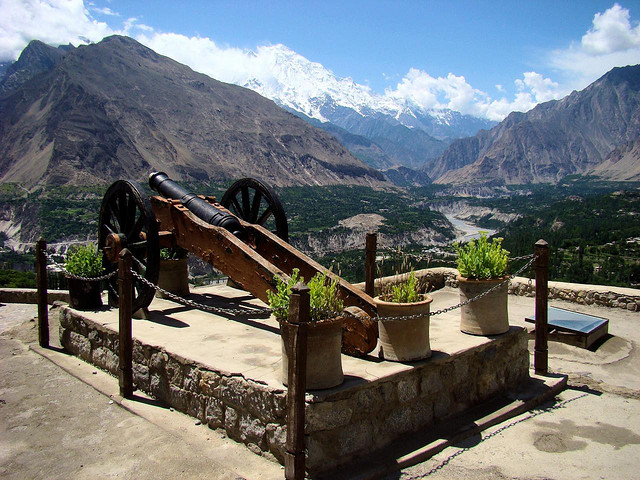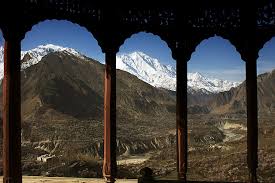Night View of Baltit Fort Hunza Gillgit Baltistan, GB Pakistan
Baltit Fort or Balti Fort is an ancient fort in the Hunza valley in the Northern Areas of Pakistan.
In former times survival of the feudal regimes of Hunza was ensured by the impressive Baltit fort, that sit on top of Karimabad. The foundations of the fort are said to date back around 700 years, but there have been rebuilds and alterations over the centuries. In the 16th century theThum married a princess from Baltistan who brought master Balti craftsmen to renovate the building as part of her dowry. The architectural style is a clear indication of Tibetan influence in Baltistan at the time.
The Mirs of Hunza abandoned the fort in 1945, and moved to a new palace down the hill. The fort started to decay and there was concern that it might possibly fall into ruin. Following a survey by the Royal Geographical Society of London, a restoration programme was initiated and supported by the Aga Khan Trust for Culture Historic Cities Support Programme. The programme was completed in 1996 and the fort is now a museum run by the Baltit Heritage Trust.
Baltit Fort breaks the monotony of mud-rock houses of Hunzakuts. It is situated on the top of a hill from where it overlooks the whole valley. The fort was built some 600 years ago. It is entirely made of stones, supported by timber beams and plastered over with sun-dried mud. Elders of Hunza tell that a Balti princess was married with the Mir of Hunza. She brought Balti masons and artisans to build this fort as a dowry item. The fort remained the palace and family home of the Mirs until 1960 when a witch came to reside in it. The royal family shifted to a new granite palace. The fort has been well kept. It maintains a museum, library and a nice restaurant. The credit goes to the Agha Khan Trust for Culture.
Baltit Fort is three-storey building with 53 rooms. The main gate opens into a dark hall or corridor on the ground floor. There are guest rooms, kitchens, storerooms, prisons and living rooms attached to this corridor. A wooden staircase goes up through a square opening in the floor above.
The second floor has family apartments, reception rooms, royal court, arms depot and guards` chambers. A balcony presents a fascinating view of the valley. Another ladder takes to the roof. This is the best spot to view the famous peak of Rakaposhi that rises straight out of cultivated fields and reaches 7788 meters in the sky. Behind the fort, the Karakoram rises in a series of needle-sharp peaks. The most famous of them is lady`s finger. Locals also call it Bulbuli`s peak, after a legendary Hunza princess. The peak is so steep that even snow cannot sustain on its top. Thus, the black peak stands in contrast with its snow covered neighbors.
|










nice post..
ReplyDeleteGilgit Baltistan
Hunza Valley
Fairy Meadows